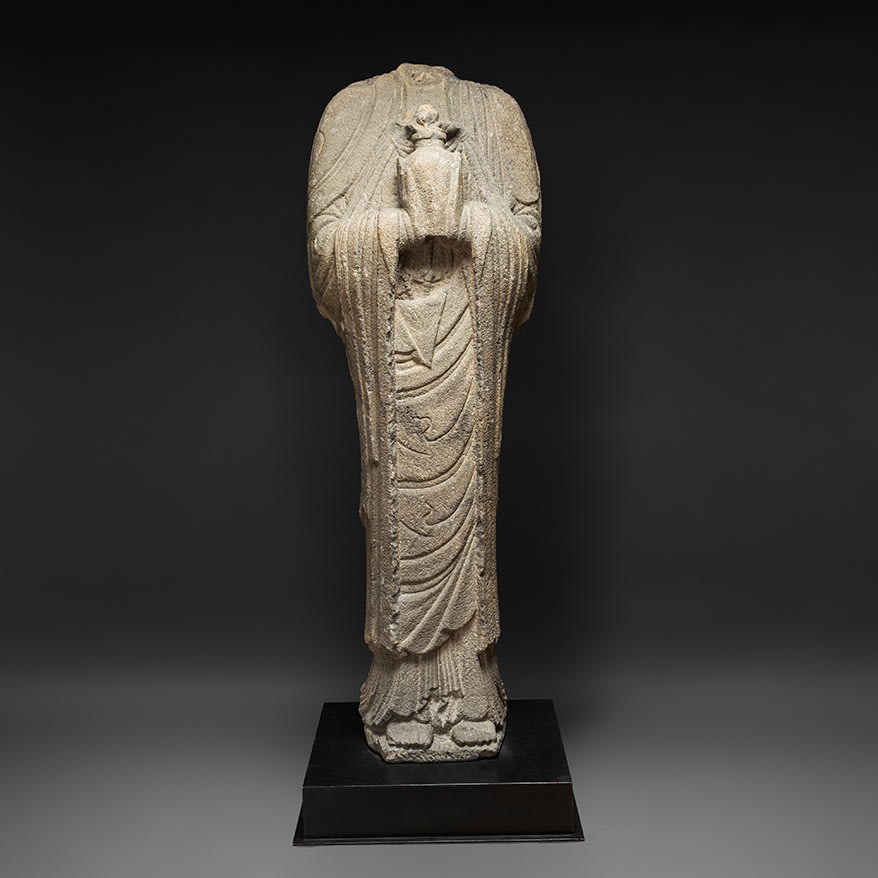Liao Basalt Torso of a Standing Guanyin, 10th Century CE - 12th Century CE
Basalt
height 175.3 cm
height 69 in
height 69 in
LA.541
An exquisitely sculpted grey basalt torso of a Bodhisattva (‘enlightened being’) standing frontally with legs joined on a low pedestal. He holds a jar with lotus buds between his palms...
An exquisitely sculpted grey basalt torso of a Bodhisattva (‘enlightened being’) standing frontally with legs joined on a low pedestal. He holds a jar with lotus buds between his palms at chest level. The outer robe, known as the sanghati, covers both shoulders and descends in delicate folds. The monumental scale of the statue allowed the sculptor to carve the drapery and scarves in fine detail.
The Khitan were an ancient nomadic tribe that lived in north-eastern China. The name ‘Liao’ comes from the valley of the Liao river where they originally lived. They were brought under Chinese rule during the Tang dynasty. In 907 AD when the Tang collapsed, a Khitan chieftain established the empire of Liao. They ruled north-eastern China contemporaneously with the Five Dynasties and later with the Northern Song. The Liao were important patrons of Buddhism. The pacifism of Buddhism and the assimilation of Chinese wealth and cultural elements gradually weakened the Liao’s once-military character. In 1125 AD the Song army annihilated the Liao.
The Khitan were an ancient nomadic tribe that lived in north-eastern China. The name ‘Liao’ comes from the valley of the Liao river where they originally lived. They were brought under Chinese rule during the Tang dynasty. In 907 AD when the Tang collapsed, a Khitan chieftain established the empire of Liao. They ruled north-eastern China contemporaneously with the Five Dynasties and later with the Northern Song. The Liao were important patrons of Buddhism. The pacifism of Buddhism and the assimilation of Chinese wealth and cultural elements gradually weakened the Liao’s once-military character. In 1125 AD the Song army annihilated the Liao.
97
of
97



